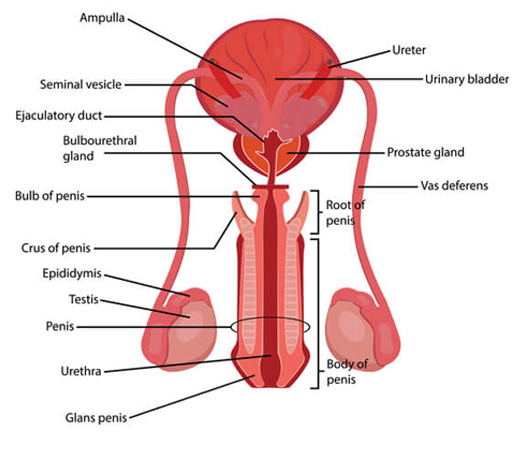
Undescended Testes
In the womb, the testicles initially form near the kidneys and then travel downward, usually reaching the scrotum by birth. However, sometimes one or both testicles get hung up somewhere along that pathway. In these cases, it is important to locate the testicle and, if possible, to reposition the testicle into its proper position in the scrotum. This is often accomplished with a minor outpatient procedure called orchidopexy. In some cases, boys have testicles that are usually in the scrotum, but when they are cold or scared (such as during a visit to the doctor!) one or both testicles are pulled up toward the body and become difficult to feel. These are sometimes called "retractile" testicles, and usually do not require surgery. However, only your urologist can evaluate the problem and determine which condition is present and whether a procedure is necessary.
Vesicoureteral Reflux
Urine normally drains from the kidneys via the ureters, collects in the bladder, then gets completely expelled through the urethra. There is a natural valve in the bladder that prevents urine from going backwards up into the kidneys during urination. Some children have a dysfunctional valve that allows the urine to travel upward while urinating, leading to infections and possibly kidney damage over time. The first treatment is often placing the child on daily antibiotics to help prevent infection and thus, kidney damage. Many children will outgrow this problem, but some will require surgical procedures to fix the "valve" and correct the problem.
Phimosis
Boys are born with a natural foreskin which covers the head of the penis. It is normal for infant boys, up to about the age of four, to be unable to retract the foreskin entirely. By the age of about five, most of the natural adhesions between the foreskin and the head of the penis have been naturally broken, and the foreskin can be completely retracted. In some boys, however, the adhesions can be severe and the opening of the foreskin can become very tight. This can lead to pain, infections and difficulty urinating. In these cases, a circumcision is usually recommended. Some milder cases of phimosis can be treated by applying a steroid cream for several weeks to months which can soften the foreskin and allow for gentle retraction.


